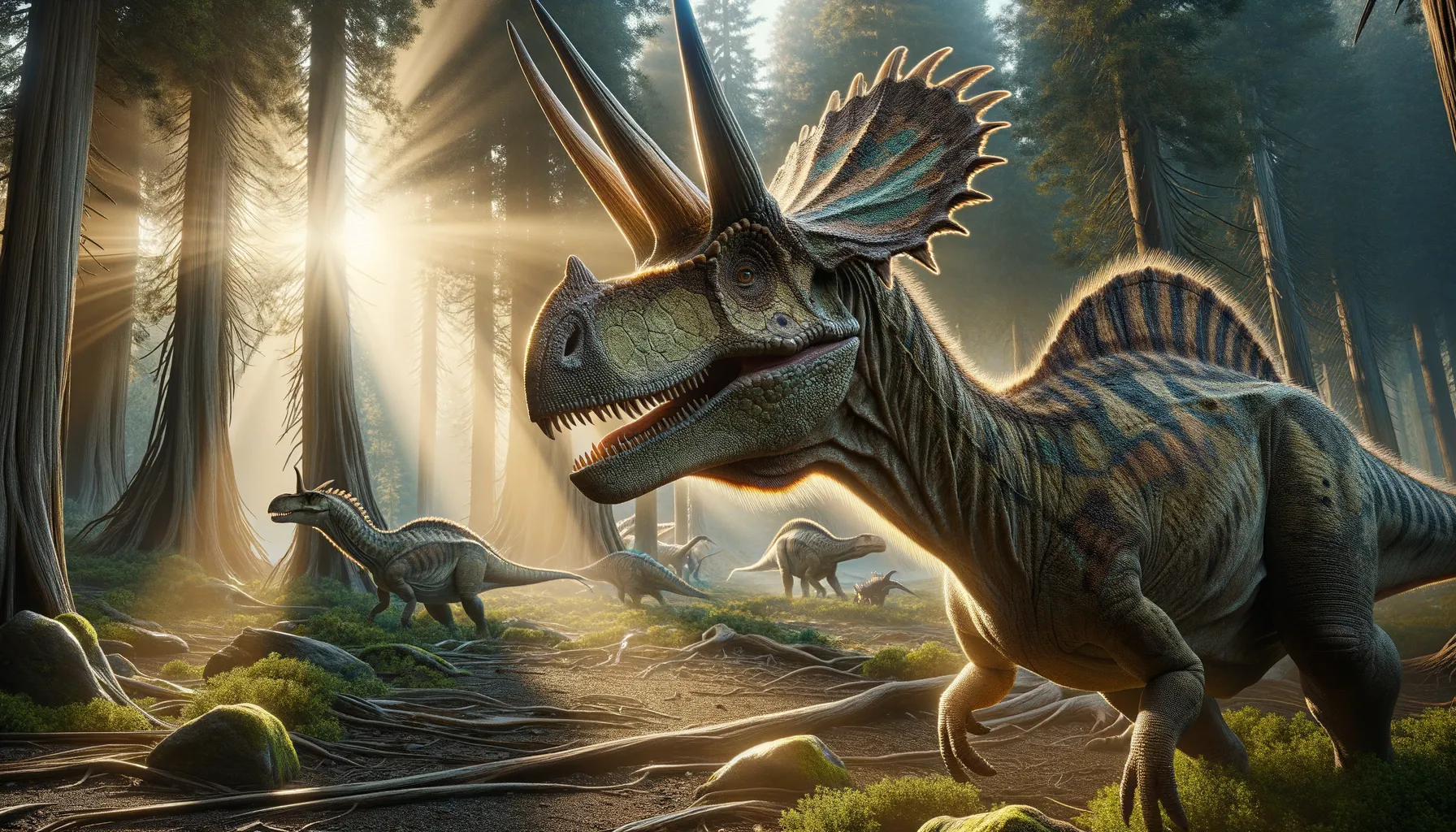
Coronosaurus
The coronet-crowned ceratopsid wonder!
Period
Cretaceous
Length
About 5 to 6 meters long.
Height
Approximately 2 meters tall.
Weight
Around 1.5 to 2 tons.
Coronosaurus was a herbivorous ceratopsid dinosaur known for its ornate frill and horns. Living during the Late Cretaceous period, it roamed what is now North America. This dinosaur was a member of the centrosaurine group, characterized by their distinctive skull structures. The Coronosaurus lived in herds, likely as a defense mechanism against predators such as tyrannosaurs. As a plant-eater, its sharp beak and shearing teeth were adapted for processing tough vegetation.
Diet
Coronosaurus was a herbivore. It primarily fed on a variety of vegetation, such as ferns, cycads, and conifers. Its beak was well-designed for nipping off leaves and stems, allowing it to efficiently gather food.
Hunting
Coronosaurus did not hunt as it was herbivorous. It likely foraged for food in herds, which improved its ability to find quality vegetation and provided protection from predators.
Environmental challenges
During its time, Coronosaurus faced environmental changes like shifting climates that affected its food sources. It needed to adapt to variations in plant availability, especially during colder seasons. Predation from large carnivores such as Tyrannosaurus was a constant threat. Living in herds helped mitigate these threats, as group living could deter predators.
Speed
Likely slow, with a leisurely pace.
Lifespan
Estimated around 20 to 30 years.
First discovery
First described in 2005 in Alberta, Canada.
Fun Facts
- Coronosaurus was a dinosaur that lived around 77 million years ago during the late Cretaceous period.
- It belonged to the ceratopsid family, which means it had some pretty impressive horns and a frilled neck shield.
- The name 'Coronosaurus' means 'crown lizard' due to its crown-like horns.
- Coronosaurus was a herbivore, meaning it only ate plants.
- This dinosaur was primarily found in what is now Alberta, Canada.
- Unlike some other dinosaurs, Coronosaurus spent a lot of time in herds, which helped protect them from predators.
- Coronosaurus, with its striking horns and frill, was likely one of the more visually impressive dinosaurs.
Growth and Development
Coronosaurus, like other ceratopsians, likely experienced rapid growth during its early years, reaching maturity faster than some other dinosaur groups. This rapid growth could offer an advantage in avoiding predators by quickly reaching a size that was less vulnerable to attack. As it aged, its horns and frill would continue to develop, potentially serving as tools for display or competition among individuals.
Habitat
The Coronosaurus lived in lush, riverine environments with plenty of vegetation. Its habitat consisted of floodplains and forests, providing both food and shelter. This environment was shared with a variety of other dinosaur species, creating a dynamic ecosystem. Seasonal changes in the habitat could influence herd movement patterns in search of optimal feeding areas.
Interaction with other species
Coronosaurus interacted with both herbivorous and carnivorous dinosaurs in its ecosystem. It formed herds, which could include mixed groups of species for mutual benefit. Predators like Tyrannosaurus were a threat, and herds could offer a more formidable collective defense. Plant-eating dinosaurs may have competed for the same food resources, leading to dynamic ecological balancing.
Natural lifespan
Coronosaurus could naturally live for about 20 to 30 years under favorable conditions.
Reproduction
Coronosaurus probably engaged in seasonal breeding, with specific rituals around mating displays involving their frills. Nests were likely built on the ground, possibly in colonies, to provide better protection. Eggs were laid in clutches, and parental care could have included guarding nests against predators.
Social behaviour
Coronosaurus was a social animal, often found in groups. This herding behavior facilitated protection from predators and improved foraging efficiency. The use of visual signals, such as frill displays, may have been significant in maintaining social hierarchies and coordinating group activities.
Fossil locations
Coronosaurus fossils are predominantly found in Alberta, Canada. They offer insight into the Late Cretaceous ecosystem of North America. Important discoveries of this species have helped enrich our understanding of centrosaurine diversity. These fossil sites continue to provide valuable data for paleontologists studying ceratopsian dinosaurs.
